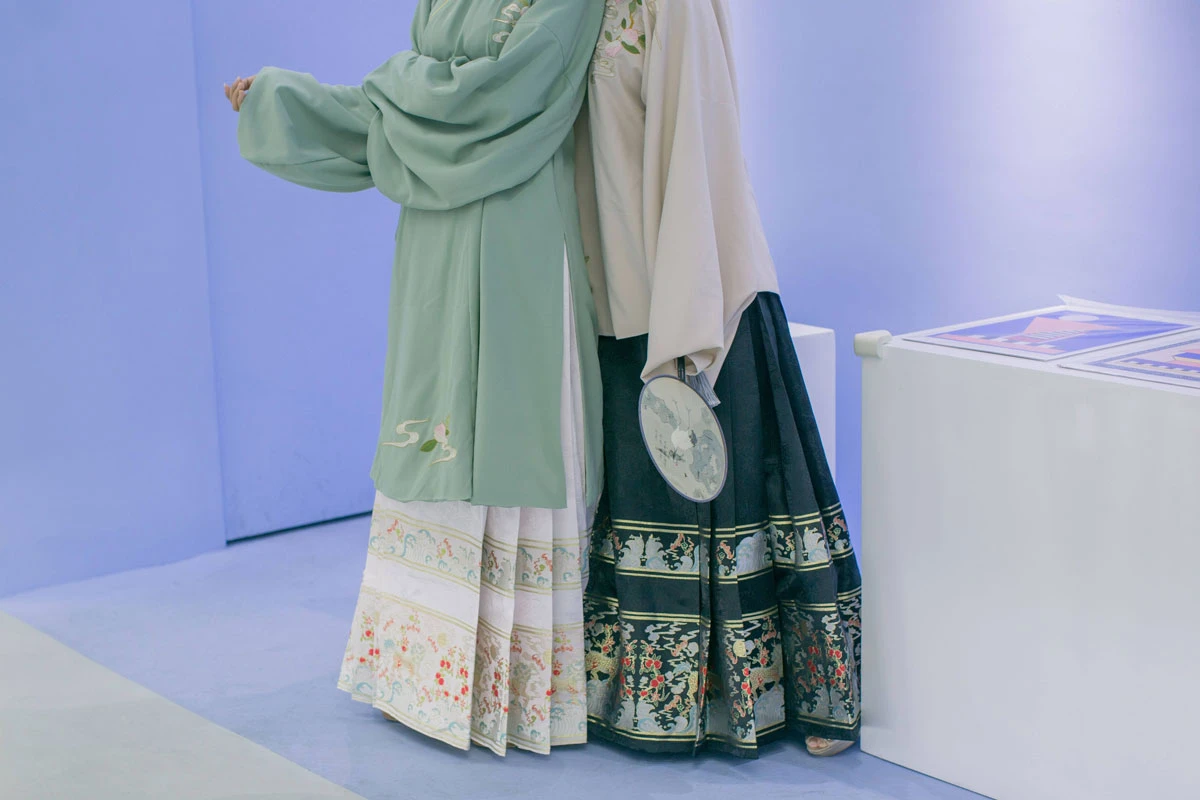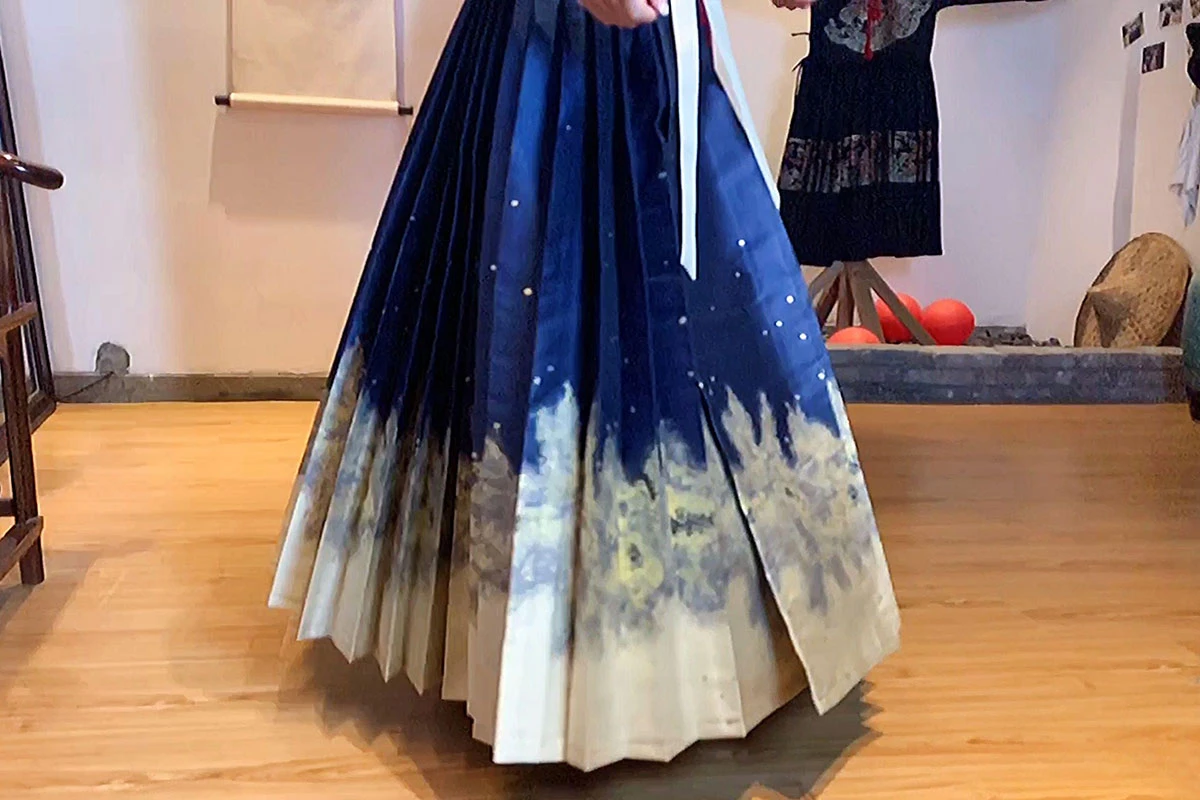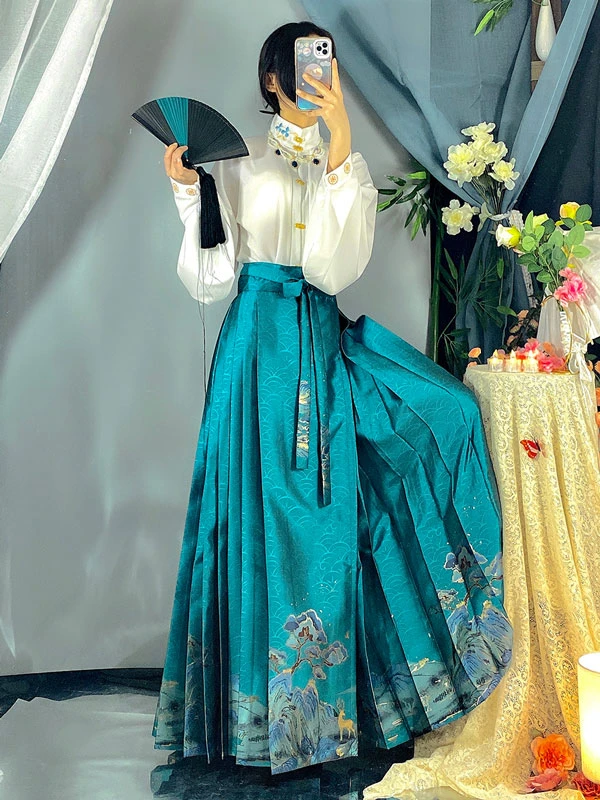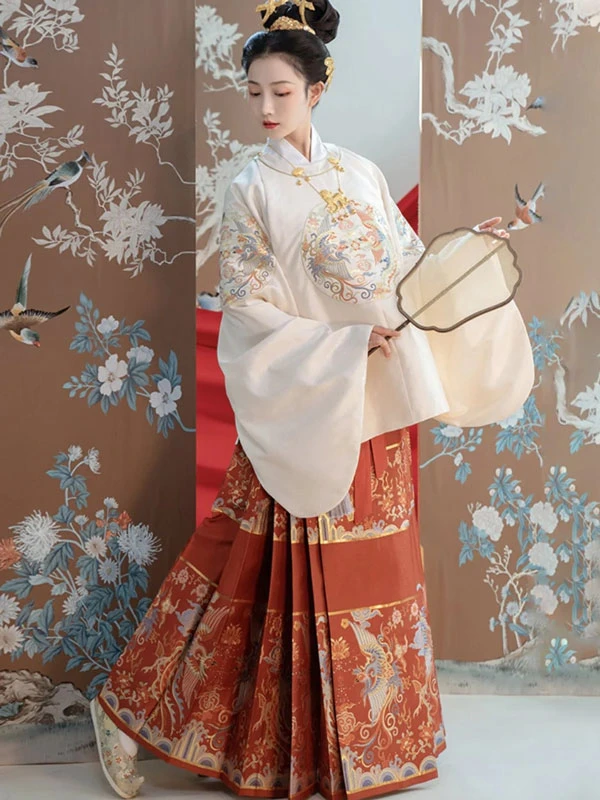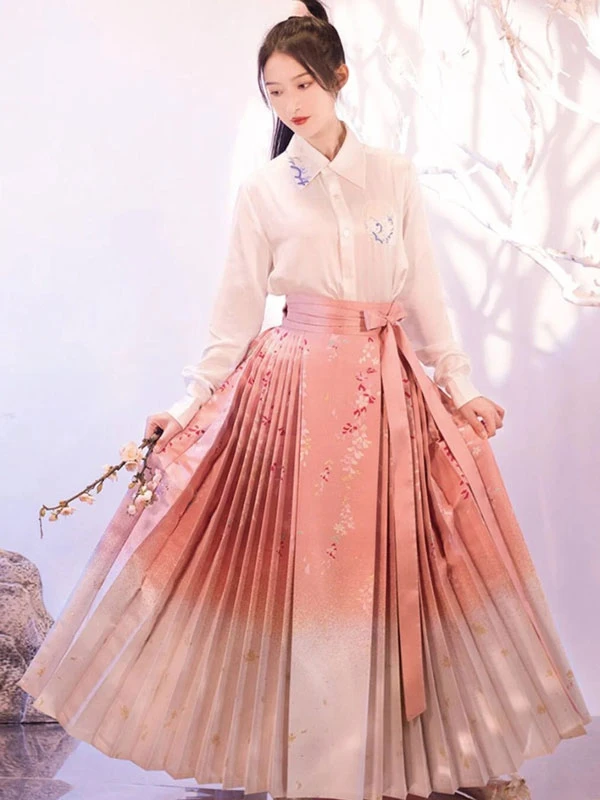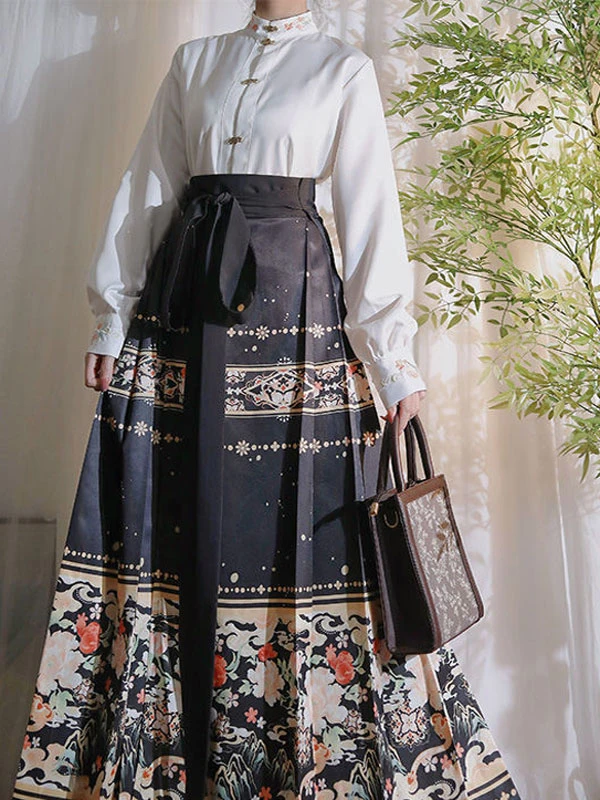The Mamianqun (literally “horse-faced skirt”) has its origins in the Song dynasty (960–1279) and was known to be worn by higher-class courtesans at the time. The mamianqun became popular during the Ming dynasty (1368 to 1644) and continued to thrive under the Manchurian rule in the Qing dynasty (1644 to 1911).
The skirt gets its name from its resemblance to the Mamian fortress: the side pleats on the skirt look like the stairs at the sides of the fortress, and even features “doors” on its front and back. The doors functioned as the faces of the fortress that horses would pass through, and so they were called “mamian,” which people later used to describe this regal skirt.
Anatomy of the Mamianqun
The mamianqun’s construction, apart from being unique and easily recognizable, is also practical because it allows great freedom of movement. Exactly how can this be achieved? Find out below!
1. Skirt doors
The mamianqun is made with two large pieces of fabric linked together solely by the waistband. The skirt is put on by wrapping it around the waist, which results in two flat doors overlapping at the front and two flat doors overlapping at the back. This allows the doors to “open” and “close” freely without revealing any undergarments, giving the wearer maximum mobility as they spread out. Women have even been able to comfortably ride horses in this skirt!
2. Pleats
These are not the usual knife pleats. Instead, pleats on the mamianqun begin by a middle point where they fold into each other, and then each fold following that will fold and spread outwards as inverted box pleats, which differ from how regular pleats only go in one direction. This design gives the skirt a distinctive trapezoidal folding effect when worn. As the wearer moves, the pleated sides fall backward and forward, giving the skirt amazing fluidity.
3. Fabrics
Typically, stiffer fabrics are used to achieve the heavy, geometric shape of the mamianqun. The skirts are usually in solid colors and embroidered in intricate bands of gold thread, especially near the hem. The most prized mamianqun can be made with heavy silk or wool, but almost any other fabric commonly used in the production of hanfu will do.
A Modern Look at Mamianqun
Modern mamianqun has made improvements on the traditional skirt; some skirts will even have pockets! There are prints and embroideries of all kinds, too, including adorable animals like cats and rabbits.
You can pair the mamianqun with a hanfu top or a simple button up shirt, which is currently a very popular trend in modern hanfu-wearing circles. For a softer look, you can choose a Song-style mamianqun, which is simpler and comes in lighter colors. The variety in styles is endless; see if any of the stylings below speaks to you!
1. Vintage-chic Mamianqun
You might say that a white Ming-style top tucked into a mamianqun gives off some Western vintage vibes reminiscent of the Edwardian era, but it’s really quite a fresh take on an outfit using all-traditional hanfu garments. This particular skirt has five pairs of pleats and dares to be bold with the contemporary landscape design at the hem.
2. Traditional Mamianqun
The traditional styling of the mamianqun features elaborate gold embroidery depicting symbolic animals and elements (such as phoenixes and water). If you desire the classic, the historically-accurate look of a noble Ming lady, you’ll want to pair a mamianqun like this with an aoqun top and gold hair accessories.
3. Preppy Mamianqun
Many modern designs have fun with gradients and nontraditional colors like this pink ensemble, which also features irregular flower prints adorning the upper half of the skirt. Match it with a fitted button up, and you’ve put together a one-of-a-kind prep outfit.
If you want a style inspired by the mamianqun, but prefer a construction more typical of modern skirts, there exists such hanfu! While the tailoring may not be traditional, skirts like the one pictured above often use strong Chinese elements in their patterns.
A Traditional Skirt for the Modern Lady
The mamianqun is bold and confident; whatever color and pattern it may come in, the skirt was born to shine. Despite its noble bearing and heavy appearance, the mamianqun is neither restrictive nor cumbersome to wear. It was designed for easy movement and is perfect for the on-the-go and active woman. How cool is it that a historical garment can work just as well – and remain just as fashionable in the 21st century as it did over 400 years ago?

